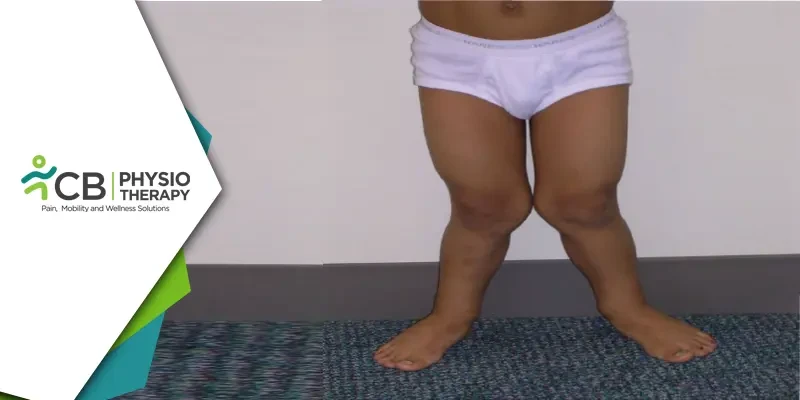Genu valgus deformity, commonly known as knock knees, is a condition where the knees come together while the feet are apart. This deformity is quite common in children and can cause various issues such as knee pain, joint pain, and difficulty in walking. Physiotherapy can be an effective treatment for genu valgus deformity in children. In this blog post, we will explore how physiotherapy can treat children with genu valgus deformity, the muscles that are weak and tight, and the exercises that can help improve the condition.
Genu valgus occurs due to a variety of reasons, including genetics, obesity, and developmental factors. During early childhood, it is normal for children to have some degree of genu valgus due to the development of the skeletal system. However, as they grow, their legs usually straighten out naturally. If genu valgus persists beyond age 7 or 8, it may indicate a problem.
Genu valgus can affect a child's growth in several ways. It can put extra stress on the knee joint and lead to pain, discomfort, and difficulty with physical activities. It can also affect their gait and balance, leading to clumsiness and an increased risk of falls. In severe cases, genu valgus can cause deformities in the legs, including bowing of the femur (thigh bone) or tibia (shin bone). This can lead to further problems with mobility and even impact the child's overall posture.
If you are concerned about your child's genu valgus, it is important to consult with a medical professional who can assess the severity of the condition and recommend appropriate treatment options. Treatment may include pediatric physiotherapy, braces, or in more severe cases, surgery.
How Does Physiotherapy Treat Genu Valgus Deformity in Children?
Physiotherapy is a non-invasive treatment option that can help improve the condition of genu valgus deformity in children. The goal of physiotherapy is to strengthen the muscles around the knee joint, improve joint stability, and correct any alignment issues. This can help improve the child's walking pattern and reduce the risk of any future knee-related problems.
The first step in physiotherapy treatment is to assess the child's condition. A physiotherapist will examine the child's gait, posture, and muscle strength. They may also take X-rays or other imaging tests to get a better understanding of the severity of the condition. Based on the assessment, the physiotherapist will develop an individualized treatment plan that may include a combination of exercises, stretches, and manual therapy techniques.
Weak Muscles in Children with Genu Valgus Deformity
Children with genu valgus deformity often have weak muscles around the hip, thigh, and knee. The following are some of the muscles that are weak in children with this condition:
- Gluteus Medius: The gluteus medius muscle is located in the hip and is responsible for stabilizing the pelvis during walking. Weakness in this muscle can cause the pelvis to drop on the side of the affected leg, leading to an abnormal gait.
- Vastus Medialis: The vastus medialis muscle is located on the inner side of the thigh and is responsible for extending the knee. Weakness in this muscle can cause the knee to buckle inward, exacerbating the genu valgus deformity.
- Tibialis Anterior: The tibialis anterior muscle is located in the front of the shin and is responsible for the dorsiflexion of the foot. Weakness in this muscle can cause the foot to drop, leading to further misalignment of the knee joint.
Children with genu valgus deformity often have tight muscles around the hip, thigh, and knee. The following are some of the muscles that are tight in children with this condition:
- Adductors: The adductors are located on the inner side of the thigh and are responsible for bringing the leg toward the midline of the body. Tightness in these muscles can exacerbate the genu valgus deformity.
- Hamstrings: The hamstrings are located on the back of the thigh and are responsible for bending the knee. Tightness in these muscles can cause the pelvis to tilt backward, leading to an abnormal gait.
- Gastrocnemius: The gastrocnemius muscle is located in the calf and is responsible for plantarflexion of the foot. Tightness in this muscle can cause the foot to remain in a pointed position, exacerbating the genu valgus deformity.

